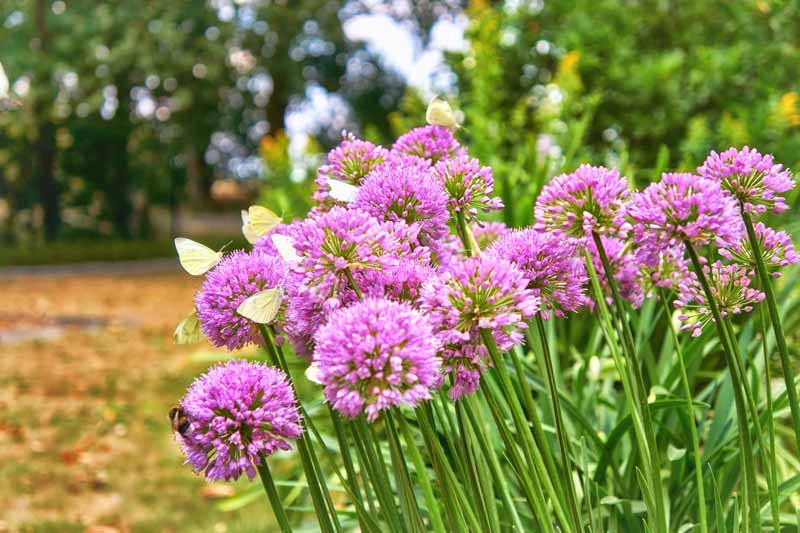Spectacular Agapanthus: Enhancing Your Yard's Charm
Spectacular Agapanthus: Enhancing Your Yard's Charm
Blog Article
Understanding the Art of Agapanthus Treatment: Vital Actions for Healthy Development and Dynamic Blooms
In the world of cultivation, the cultivation of agapanthus stands as a satisfying venture for those who seek to nurture these elegant blooming plants. From selecting the appropriate selection to mastering trimming methods, the trip in the direction of growing prospering agapanthus plants is diverse and holds the key to unlocking the complete capacity of these botanical treasures.

Choosing the Right Agapanthus Selection

When picking the right Agapanthus selection for your yard, think about aspects such as environment suitability, bloom color, and growth habit. Agapanthus, typically referred to as Lily of the Nile or African lily, comes in a range of colors varying from tones of purple and blue to white. Pick a flower color that matches your existing garden combination to create an unified landscape. Furthermore, take into consideration the environment in your area to make sure the Agapanthus variety you choose can prosper in your certain conditions. Some selections are a lot more tolerant of cold temperatures, while others prefer warmer climates. Understanding the growth practice of different Agapanthus ranges is critical for correct placement within your garden. Some varieties have a clumping growth habit, suitable for boundaries or containers, while others have an even more dispersing nature, appropriate for ground cover or mass plantings. By meticulously examining these aspects, you can select the perfect Agapanthus variety to improve the appeal of your yard.
Suitable Planting Problems
Taking into consideration the ideal ecological demands is vital for effective Agapanthus farming. Agapanthus plants are delicate to cool temperature levels and need to be safeguarded from frost throughout winter months.
To make sure healthy and balanced growth and dynamic flowers, plant Agapanthus light bulbs at a depth of about 2-4 inches and room them 8-12 inches apart. Mulching around the base of the plants helps retain moisture and subdues weed development.
Watering and Fertilizing Tips
Preserving proper wetness levels and providing vital nutrients are key components in the care regimen for Agapanthus plants. When it comes to watering Agapanthus, it is crucial to strike a balance. These plants favor continually wet dirt however are prone to root rot if overwatered.
Fertilizing Agapanthus is crucial for advertising healthy and balanced development over at this website and prolific blooms. Use a well balanced plant food, such as a 10-10-10 formula, in the very early springtime as new development arises. Repeat this application every 6-8 weeks throughout the expanding period. Avoid extreme fertilizing, as it can bring about lush foliage at the expense of blossoms. Always comply with the manufacturer's guidelines for proper dilution and application approaches. By adhering to these watering and feeding pointers, you can guarantee your Agapanthus plants flourish and create dynamic, lasting blossoms.
Trimming Strategies for Agapanthus
Pruning Agapanthus plants at the ideal times and with correct methods is essential for keeping their health and wellness and promoting optimum development and blooming. The optimal time to trim Agapanthus is in late winter season or very early spring prior to brand-new development arises.
For flowered stems, wait until the flowers have withered and afterwards trim them back to the base. This not just tidies up the plant's appearance however also encourages the growth of brand-new blossom buds. Deadheading spent blossoms can likewise reroute the plant's energy right into creating even more blossoms instead of setting seeds. However, if you intend to gather seeds for proliferation, leave some flowers to fully grown and dry on the plant.
Bear in mind to use clean, look at more info sharp tools to make specific cuts and decrease the threat of introducing conditions. Agapanthus. Regular trimming will assist maintain your Agapanthus looking healthy and balanced and neat while making sure a plentiful display screen of stunning blooms
Taking Care Of Typical Pests and Diseases
After making sure correct pruning strategies for Agapanthus, it is important to attend to usual parasites and diseases that can influence the wellness and vigor of these plants. One common parasite that impacts Agapanthus is the Agapanthus gall midget.
Additionally, Agapanthus plants can suffer from origin rot if they are grown in inadequately draining pipes soil. By being alert and taking punctual activity against pests and illness, you can aid your Agapanthus plants prosper and create vibrant flowers. Agapanthus.

Conclusion
In conclusion, grasping the art of agapanthus care entails picking the ideal range, giving ideal planting problems, correct watering and feeding, appropriate pruning strategies, and addressing common bugs and illness. By complying with these vital actions, you can make sure healthy and balanced development and dynamic flowers for your agapanthus plants. Bear in mind to routinely keep track of and preserve your plants to promote their general health and longevity.
To ensure learn this here now healthy growth and vivid flowers, plant Agapanthus light bulbs at a depth of concerning 2-4 inches and area them 8-12 inches apart. By complying with these watering and feeding pointers, you can guarantee your Agapanthus plants thrive and generate lively, resilient flowers.
One common parasite that influences Agapanthus is the Agapanthus gall midget. Additionally, Agapanthus plants can endure from root rot if they are planted in badly draining soil. By following these necessary actions, you can guarantee healthy growth and vibrant blooms for your agapanthus plants.
Report this page